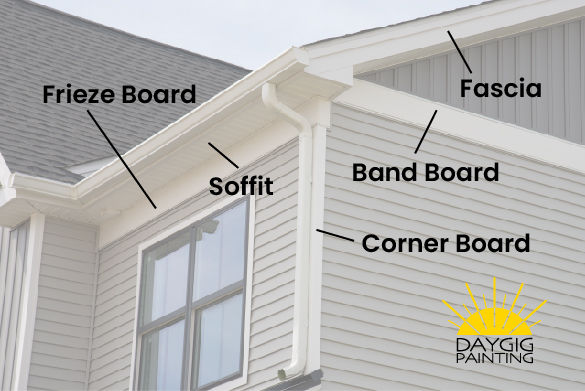Why Exterior Trim Matters
- Billy Howe

- Aug 15
- 2 min read
How subtle lines and quiet contrast can change the whole look of your home.

Most people think about exterior paint as one big color decision. But what really makes a house stand out—or settle in—has a lot to do with the smaller details.
Some homes look great in a single color, top to bottom. Others benefit from contrast—highlighting trim, soffits, or structural lines with a second or third color. The outcome can feel completely different, even if the paint colors themselves aren’t that bold.
A Quick Guide to Exterior Trim
Not every home has the same features, but here are a few that can make a real difference:

Fascia – The board along the edge of the roof. It’s where your gutters attach.
Soffits – Under the overhangs; essentially the ceiling under the eaves.
Frieze board – A horizontal band just below the roofline. A great spot for subtle contrast.
Corner boards – Trim that wraps the outside corners of your siding.
Band boards – Horizontal boards that break up large areas of siding or separate floors.
Some homes already have these in place. Others don’t—but a carpenter can often add them before painting if you want more structure or visual definition.
The same applies to things like window trim and shutters, too—not just the pieces with fancy names. All those smaller choices add up to something big.

Choosing Where to Add Contrast
A single-color exterior can feel modern and clean—such as a warm white that extends from top to bottom. But when you break up that surface with crisp white fascia or contrasting corner boards, the house starts to feel sharper. More intentional.
Want to make your house feel taller? Paint the vertical trim a shade that stands out.
Want to break up a two-story wall? Use a horizontal band in a complementary tone.

How Much Contrast Is Too Much?
Not all contrast is created equal. Some homes look best with high-contrast pairings—think dark siding with bright white trim—while others benefit from more subtle shifts. A soft gray body with slightly lighter trim can feel polished without being loud.
It comes down to how bold you want the lines to feel. High contrast draws attention to the architecture. Low contrast blends things together and softens the look.
There’s no wrong approach—just different results.
Same House, Different Feel
Paint can’t change the bones of a house, but it can shift how those bones show up.
We’ve painted homes where every piece was the same color, and it looked great. We’ve also painted homes with three carefully chosen tones—and the result felt like a full renovation.
If your home feels a little flat or undefined, it might not need more color—it might just need more contrast.
We’re happy to take a walk around, point out the details, and help you find the approach that suits you best.
Thank you.


Billy Howe
Founder, Daygig Painting

Daygig Painting
8 Quail Walk Lane
Hilton Head Island, SC 29926
Blog: Why Exterior Trim Matters





Comments